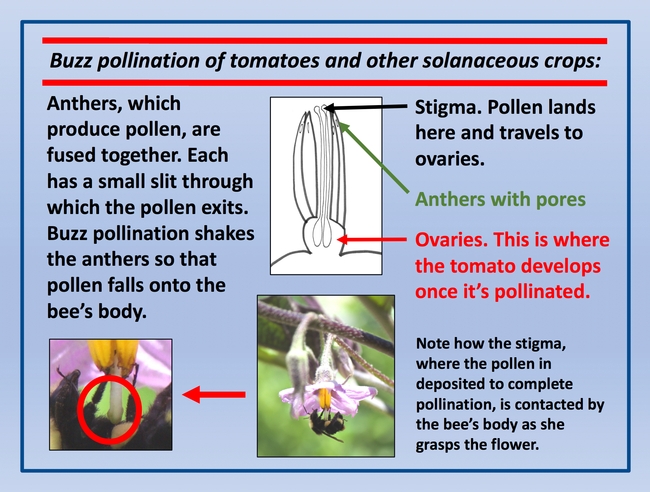California's tomato crop (processing and fresh) was worth $1.7 billion in 2015; our state grows 96% of the US crop of processing tomatoes. A sure sign of summer, this tasty and nutritious specialty crop is a source of vitamins A, B6, C, E, and K as well as thiamin, niacin, folate, magnesium, potassium, and fiber.
No bees = fewer tomatoes. Research has shown that surrounding tomato fields with flowering plants improves yield. Tomatoes are both wind- and bee-pollinated, but bee-pollinated tomatoes have been found to have higher levels of vitamin C and to weigh more. Honey bees cannot pollinate tomatoes they require a special type of pollination called 'buzz pollination' that honey bees cannot do. Buzz pollinators can vibrate their bodies to shake pollen from the enclosed anthers of tomatoes and other solanaceous crops. Bee pollinators of tomatoes include carpenter bees (Xylocopa spp.) and bumble bees (Bombus spp.).
